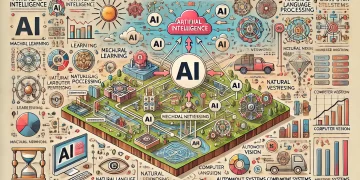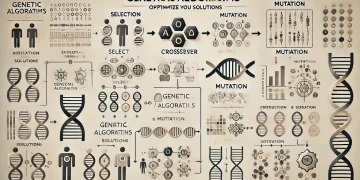Artificial Intelligence (AI) is transforming public safety and emergency response by improving crisis detection, rapid response, and disaster management. AI-driven technologies enable law enforcement agencies, emergency responders, and public safety officials to enhance decision-making, optimize resource allocation, and save lives. This article explores the various applications of AI in public safety and emergency response.
1. AI for Predictive Policing and Crime Prevention
AI-powered predictive analytics help law enforcement agencies identify crime patterns, assess risk levels, and allocate resources effectively. Machine learning algorithms analyze historical crime data to predict potential criminal activities and recommend preventive measures. Facial recognition and video surveillance systems powered by AI improve security monitoring and suspect identification.
2. AI in Disaster Management and Early Warning Systems
AI-driven systems enhance disaster preparedness by analyzing real-time data from weather satellites, seismic sensors, and social media. AI can predict natural disasters such as hurricanes, earthquakes, and floods, providing early warnings and allowing authorities to take proactive measures. AI-powered drones assist in assessing damage and coordinating relief efforts.
3. AI in Emergency Dispatch and Response Optimization
AI-driven emergency response systems optimize dispatch operations by analyzing incoming calls, determining priority levels, and recommending the fastest routes for emergency vehicles. AI chatbots assist in handling emergency calls, providing real-time instructions to callers while emergency responders are on the way.
4. AI for Search and Rescue Operations
Autonomous drones and AI-powered robots play a crucial role in search and rescue missions. AI analyzes satellite imagery, thermal imaging, and sensor data to locate missing persons in disaster-affected areas. Machine learning algorithms assist in mapping hazardous zones and guiding rescue teams efficiently.
5. AI in Firefighting and Hazardous Incident Response
AI-powered robots and drones assist firefighters by detecting fire origins, mapping escape routes, and monitoring toxic gas levels. AI-driven predictive models analyze environmental conditions to assess fire risks and recommend preventive measures.
6. AI in Cybersecurity and Threat Detection
AI enhances cybersecurity by detecting and preventing cyber threats in real-time. Machine learning algorithms analyze network traffic patterns to identify anomalies, prevent cyberattacks, and secure critical infrastructure. AI-driven threat intelligence platforms help law enforcement agencies combat cybercrimes.
7. AI in Public Health Crisis Management
AI assists in tracking and managing public health crises, such as pandemics and disease outbreaks. AI-powered analytics help predict disease spread, optimize resource allocation, and enhance emergency medical response. AI-driven chatbots provide health advice and assist in crisis communication.
8. AI in Traffic Management and Accident Prevention
AI-powered traffic monitoring systems analyze real-time data to optimize traffic flow, reduce congestion, and prevent accidents. AI-driven smart traffic signals adjust in response to traffic patterns, improving emergency vehicle mobility.
9. AI in Border Security and Threat Detection
AI-powered surveillance systems enhance border security by analyzing real-time video feeds, detecting suspicious activities, and identifying security threats. AI-driven biometric authentication systems improve identity verification at border checkpoints.
10. AI in Public Safety Communications and Crisis Coordination
AI-powered communication platforms facilitate efficient crisis coordination among emergency responders, government agencies, and the public. AI-driven chatbots and virtual assistants provide real-time updates, safety instructions, and emergency alerts to citizens.
Conclusion
AI is revolutionizing public safety and emergency response by enabling predictive analytics, real-time monitoring, and intelligent decision-making. From disaster management to cybersecurity and emergency medical response, AI-driven technologies enhance crisis preparedness and response efficiency. As AI continues to evolve, its integration into public safety systems will significantly improve security, save lives, and mitigate the impact of emergencies.
References
- National Institute of Justice. (2023). “AI in Predictive Policing and Crime Prevention.”
- Federal Emergency Management Agency (FEMA). (2023). “AI-Driven Early Warning Systems and Disaster Preparedness.”
- World Health Organization (WHO). (2023). “AI and Public Health Emergency Response.”
- MIT Technology Review. (2022). “AI-Powered Search and Rescue Missions.”
- Forbes. (2023). “The Role of AI in Cybersecurity and Threat Intelligence.”
- IEEE Spectrum. (2023). “AI for Smart Traffic Management and Accident Prevention.”




































